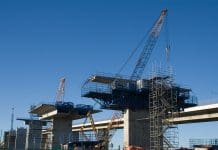Heritage Assets
Many towns have the potential for economic revival based on their Heritage assets – listed buildings, historic sites and the wider background provided by conservation areas. Communities often campaign for a landmark building to be listed for its historic interest, but listing is only the start. The greatest challenge is finding ways for that building to earn its keep. Yet with the right uses and presentation, it can be a focal point for wider regeneration and a real asset to the surrounding community.
In recent years, eminent heritage bodies have abandoned the Regency gentry’s aversion to “trade” and become more sympathetic to business uses providing the income stream to maintain a listed building or local landmark. Even so, they will still wish to see efforts made to maintain community support and promote wider understanding of the building’s significance.
When you need Friends
The initial impetus to retain a landmark building often comes from local enthusiasts organising themselves into a Friends group to support it. This was brought home to me a few years ago when the Friends group for an Edwardian library asked me to prepare an application for Listed Building Consent to restore some of the original signage. Friends can contribute practical help or attract extra capital funding – but for new services or better facilities rather than to maintain the core service. National Lottery funds and charitable trusts have been important resources for voluntary groups to draw upon, but such funders are rightly reluctant to subsidise the public sector. Most funders now expect to see well-developed business plans to convince them that any rescued building or amenity can survive in the longer term. Any realistic bid will demand collaboration between different interests, to consider what mix of services and attractions will be practical. Some of these may spin off as community projects or social enterprises, attracting other funding streams.
Making Conservation Areas Work
We have had Conservation Areas in our towns for over 40 years, but they have tended to restrict development rather than promote it. Many of the early conservation areas were Georgian squares and the like, where the priority should be maintaining a uniform character. Others are parks and gardens where the presumption should be against cluttering them with extra buildings. Developments in such areas are often exercises in camouflage.
However some now cover commercial town centres, where the need is to balance commercial vitality with maintaining the distinctive character. In such town centres, the key is encouraging variety while respecting the scale and context – otherwise the risk is that a big new block will dominate, whatever its style or colour scheme.
Councils find it easier to apply uniform design policies across the whole borough, but each conservation area needs its own guidelines which identify what is special about it. Better still if they also provide a vision of how it can be improved and nurtured.
Here to Help
Contact Alan Piper for advice on single properties or groups of buildings, and in particular for:
- Building condition surveys.
- Conservation reports.
- Applications for Listed Building Consent or planning permission.
- Feasibility studies and space planning for existing buildings.
Alan Piper
Chartered Architect
Alan Piper Consultancy
Tel: +44 (0)207 207 0347
APiperBrix@aol.com













